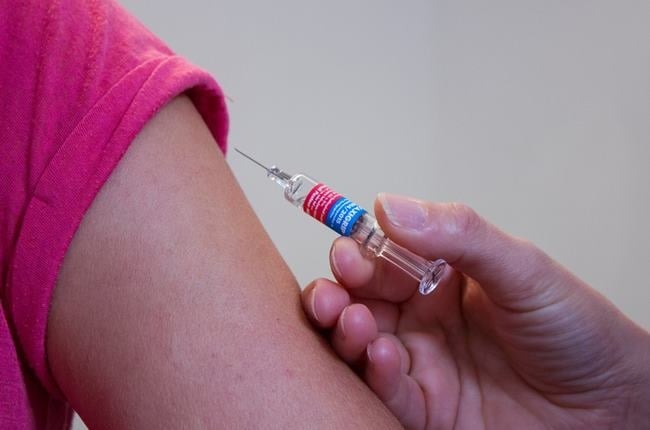News24.com | Major measles outbreak predicted to occur in 2021 in wake of Covid-19 pandemic

- The Covid-19 pandemic has made previously routine vaccinations against other infectious diseases, such as measles, a challenge
- This is because many vaccination campaigns were paused for months in 2020
- These factors may result in severe measles outbreaks in 2021, and governments need to urgently address the situation
Measles, a highly contagious respiratory disease, claimed over 207 500 lives in 2019, according to the World Health Organization – a 50% increase from 2016.
While vaccination efforts may have reduced the number of deaths from 2000 to 2018, the Covid-19 pandemic is impacting efforts to control and treat other diseases, including measles.
The disease, caused by a virus in the paramyxovirus family, affects mainly unvaccinated young children and unvaccinated pregnant women. However, any non-immune person (who has not been vaccinated or was vaccinated but did not develop immunity) can become infected, notes the WHO.
A recently-published article in The Lancet has therefore called for urgent international action to prevent potentially devastating measles epidemics in the years to come.
As a result of resources and attention shifting to the pandemic, many children have missed out on measles vaccination this year, making future measles outbreaks inevitable, said lead author Professor Kim Mulholland, from the Murdoch Children’s Research Institute and Chair of the WHO’s SAGE Working Group on measles and rubella vaccines.
Economic impact of lockdown, malnutrition, and measles
The year 2020 has been a quiet year for measles, thanks to travel reductions and national Covid-19 control measures implemented globally. However, the resulting economic impact could have a direct effect on the proliferation of the disease, especially against the background of childhood malnutrition.
The severity of measles can be worsened through malnutrition, the authors wrote, leading to poorer outcomes and more deaths, especially in low- and middle-income countries. (Measles is particularly common in parts of Africa and Asia, where the majority – more than 95% – of measles deaths occur in countries with low per capita incomes and weak health infrastructures.)
“Children who die from measles are often malnourished, but acute measles pushes many surviving children into malnutrition,” Mulholland said.
“Malnutrition, along with measles-associated immune suppression, leads to delayed mortality, while co-existing vitamin A deficiency can also lead to measles-associated blindness.
“The coming months are likely to see increasing numbers of unimmunised children who are susceptible to measles. Many live in poor, remote communities where health systems are less resilient, and malnutrition and vitamin A deficiency are already increasing.”
Vaccination campaigns also halted during pandemic
Mulholland also expressed concern about the negative effect the Covid-19 pandemic has had on the control of vaccine-preventable diseases, as a result of vaccination campaigns being paused during some months in 2020, and routine immunisation services disrupted in many countries.
By the end of October 2020, the WHO estimated that delayed vaccination campaigns in 26 countries led to 94 million children missing scheduled measles vaccine doses.
“All these factors create the environment for severe measles outbreaks in 2021, accompanied by increased death rates and the serious consequences of measles that were common decades ago,” Mulholland said.
“This is despite the fact that we have a highly cost-effective way to prevent this disease through measles vaccination.”
The return of measles in 2019
Before Covid-19 swept the globe, there was already a dramatic return of measles – more than at any time in the past 20 years, the researchers stated.
According to WHO data, there were 9.8 million measles cases and 207 000 deaths in 2019, a staggering 50% more than in 2016.
Where have most cases occurred?
Africa has seen the large majority of measles-related deaths, with major outbreaks happening in Madagascar and the Democratic Republic of Congo. The disease also re-emerged in South America, especially among indigenous communities.
Mulholland explained that the inadequate vaccination that led to the 2019 measles outbreaks has still not been adequately addressed, adding that the situation has been exacerbated by service disruptions during the Covid-19 pandemic where high-risk, unimmunised children were clustered together in unreached communities.
The way forward: Proposed solutions
The authors proposed three pillars for immediate action:
- Help countries reach unimmunised children through catch-up immunisation and campaigns.
- Better prepare countries for expected outbreaks – the WHO and partners have developed a Strategic Response Plan to assist with measles outbreak prevention, preparedness and response.
- Maintain measles and rubella elimination targets. WHO’s new Measles Rubella Strategic Framework 2021–2030, aligned with the Immunization Agenda 2030 provides a plan for strengthening routine immunisation and surveillance.
“Without concerted efforts now, it is likely that the coming years will see an increase in measles and its severe, frequently fatal, complications,” Mulholland said, commenting that the proposed solutions might help end the outbreaks of the past decade.
READ | How measles complications can affect every organ
READ | Measles leaves people more vulnerable to future infections
READ | Vaccinations halted in several poor countries due to coronavirus fears
Image: Katja Fuhlert from Pixabay
